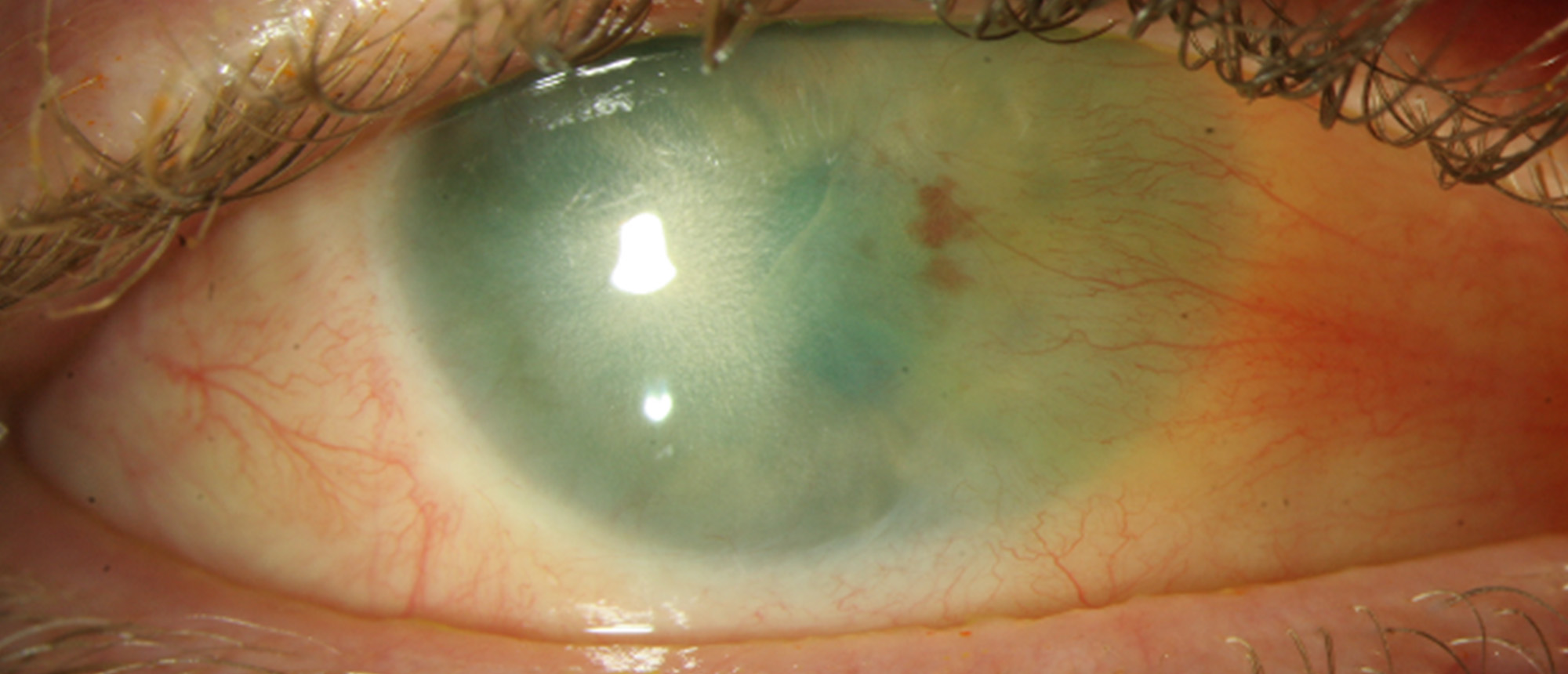Bilateral Limbal Stem Cell Deficiency
Ocular burns are ophthalmic emergencies that can lead to severe long-lasting visual morbidity and disability. The prognosis for visual recovery is largely determined by the degree of ocular tissue damage on initial presentation, especially the extent of limbal involvement. A ship cruise engine operator with no past ocular history presented to the emergency department after suffering second-degree alkali chemical burns to his face, shoulders, and arms during a ship engine explosion. Initial examination revealed symmetrical involvement with extensive conjunctival blanching and limbal ischemia. After stabilization and acute treatment, the patient developed bilateral limbal stem cell deficiency. Over the following twelve years, the patient has necessitated multiple cadaveric limbal stem cell transplantations, keratoplasties, and continued immunosuppression to stabilize the ocular surface and optimize visual outcomes. While optimal visual acuity has been achieved after every transplantation, the transplants have a short lifespan, subjecting the patient to a lifetime of operations. While there are options such as keratoprostheses, young patients present a challenge, as the long-term complications of such prostheses can be devastating. This case highlights the challenges in the long-term management of severe chemical injury-induced limbal stem cell deficiency.
Presentation Date: 09/15/2022
Issue Date: 10/14/2022
Please log in or click on ENROLL ME to access this course.
